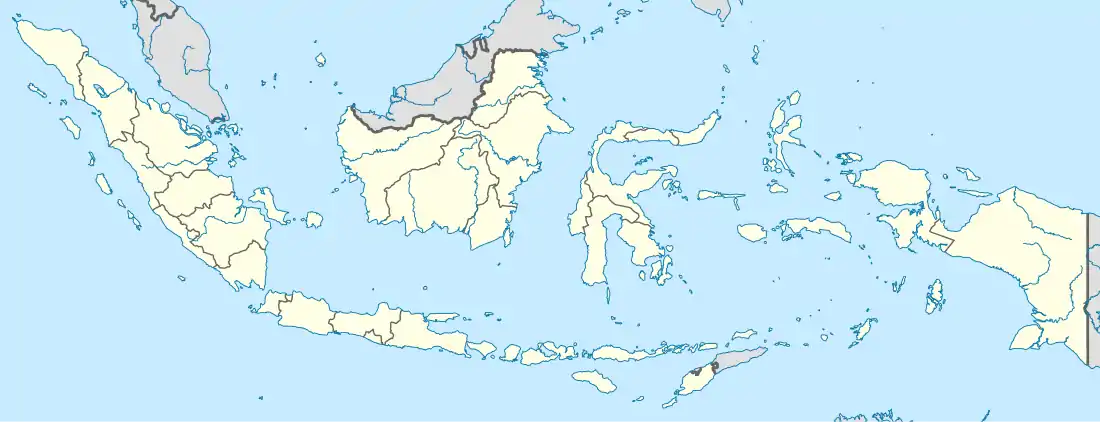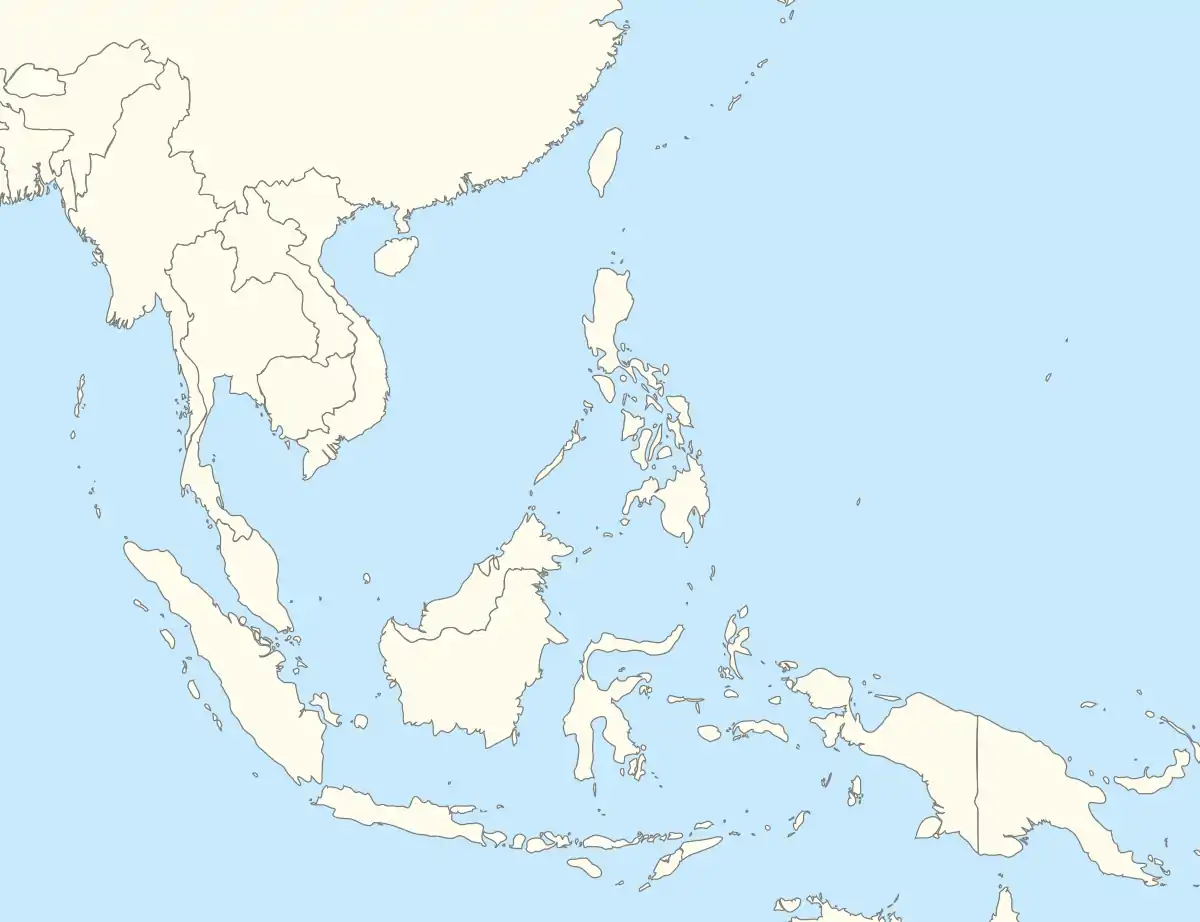Matbat language
Matbat is a heavily Papuan-influenced Austronesian language spoken in West Papua on the island of Misool, Raja Ampat islands.[1] Dialects are Magey and Tomolol.[2]:17 Like neighboring Ma'ya, it is one of a handful of Austronesian languages with true lexical tone rather than a pitch-accent system or complete lack of phonemic tonal contrasts as with most other Austronesian languages.[3]
| Matbat | |
|---|---|
| Misool | |
| Native to | Indonesia |
| Region | Misool, Raja Ampat islands |
Native speakers | 1,000–1,500 (2001)[1] |
| Language codes | |
| ISO 639-3 | xmt |
| Glottolog | matb1237 |
 Matbat  Matbat  Matbat | |
| Coordinates: 1.88°S 130.07°E | |
Distribution
Locations within Raja Ampat Regency:[4]
- Misool Timur District: Tumolol, Lenmalas, Lenmalas Timur Barat, Audam, Foley, and Eduai villages
- Misool Utara District: Atkari and Salafen villages
- Misool Barat District: Magei village
Phonology
Phonology of the Matbat language:[1]
| Labial | Alveolar | Palatal | Velar | Glottal | |
|---|---|---|---|---|---|
| Plosive | p b | t d | k g | ||
| Fricative | ɸ | s | h | ||
| Nasal | m | n | ŋ | ||
| Lateral | l | ||||
| Glide | j | w |
| Front | Back | |
|---|---|---|
| Close | i | u |
| Mid | e | o |
| Open | a | |
Tones
Matbat has five lexical tones: high falling ˥˩ 41, high ˦ 3, low rising ˩˨ 12, low level ˩ 1, and low falling ˨˩ 21, which in open syllables has a peaking allophone, ˩˨˩ 121. Most Matbat words are monosyllabic; additional syllables in polysyllabic words are often weak and toneless, though a few words do have two tonic syllables. Examples of some of the longer monomorphemic words are /kamow˩˨/ 'star', /wuj˦te/ 'sea shore', /sapu˥˩luj˩˨/ 'round', /bim˦bom˩˨˩pu/ 'butterfly'.
Evolution
Tonogenesis in Matbat remains unclear. Some Matbat reflexes of Proto-Malayo-Polynesian (PMP) proto-forms are listed below.[3]:658–659
References
- Remijsen, A. C. L. (2002). Word-Prosodic Systems of Raja Ampat Languages. Leiden: Leiden University.
- Kamholz, David (2014). Austronesians in Papua: Diversification and change in South Halmahera–West New Guinea. Ph.D. dissertation, University of California, Berkeley. https://escholarship.org/uc/item/8zg8b1vd
- Blust, Robert (2013). The Austronesian languages. A-PL 008 (revised ed.). Canberra: Pacific Linguistics. hdl:1885/10191. ISBN 9781922185075.
- Ronsumbre, Adolof (2020). Ensiklopedia Suku Bangsa di Provinsi Papua Barat. Yogyakarta: Penerbit Kepel Press. ISBN 978-602-356-318-0.
Further reading
- Remijsen, Bert (2001). "A second RA tone language: Matbat". Word-prosodic systems of Raja Ampat languages (PDF). Leiden University. pp. 89–104. ISBN 90-76864-09-8.
